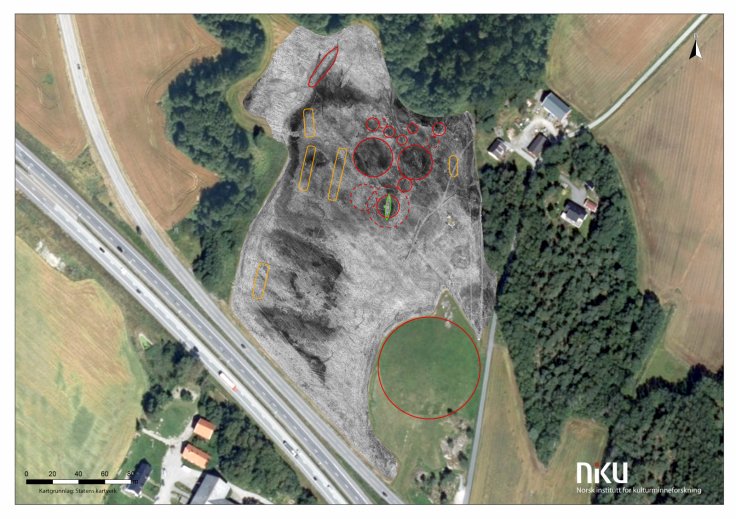
A group of archaeologists have discovered a wooden Viking ship, which was buried farmland in southeast Norway. By using high-resolution ground-penetrating radar the excavators not only found the ancient watercraft but also traced the outlines of eight other burial mounds and five nearby longhouses.
Archaeologists stated that the 20-meter long keel and most of its timbers remain well preserved. The ship was buried just half a metre below the topsoil. There are three such intact ship burials have been recorded in Norway. But the newly found ship has its own significance because the burial mound that once covered it has long since been ploughed out.
As per The Guardia, Lars Gustavsen, an archaeologist from the Norwegian Institute for Cultural Heritage Research (Niku) and the leader of this research project said that "The ship-burial does not exist in isolation, but forms part of a cemetery which is clearly designed to display power and influence."
He also stated that the study also suggested that the area surrounding the surviving Jelle mound, which still rises high in the field, had been a cemetery designed to display the power and influence of Viking leaders. The research also revealed that the ships, once used for trade and spread the terror across northern Europe, were very precious and such burial sites are considered as the reserved lands for high-status individuals.

Knut Paasche, an expert on Viking ships at Niku appreciated the excavation project and addressed the findings as "incredibly exciting." However, the main tool of this research process was high-resolution ground-penetrating radar, which was developed by the Ludwig Boltzmann Institute for Archaeological Prospection and Virtual Archaeology in Austria.
Paasche said, "This new ship will certainly be of great historical significance as it can be investigated with all modern means of archaeology."









